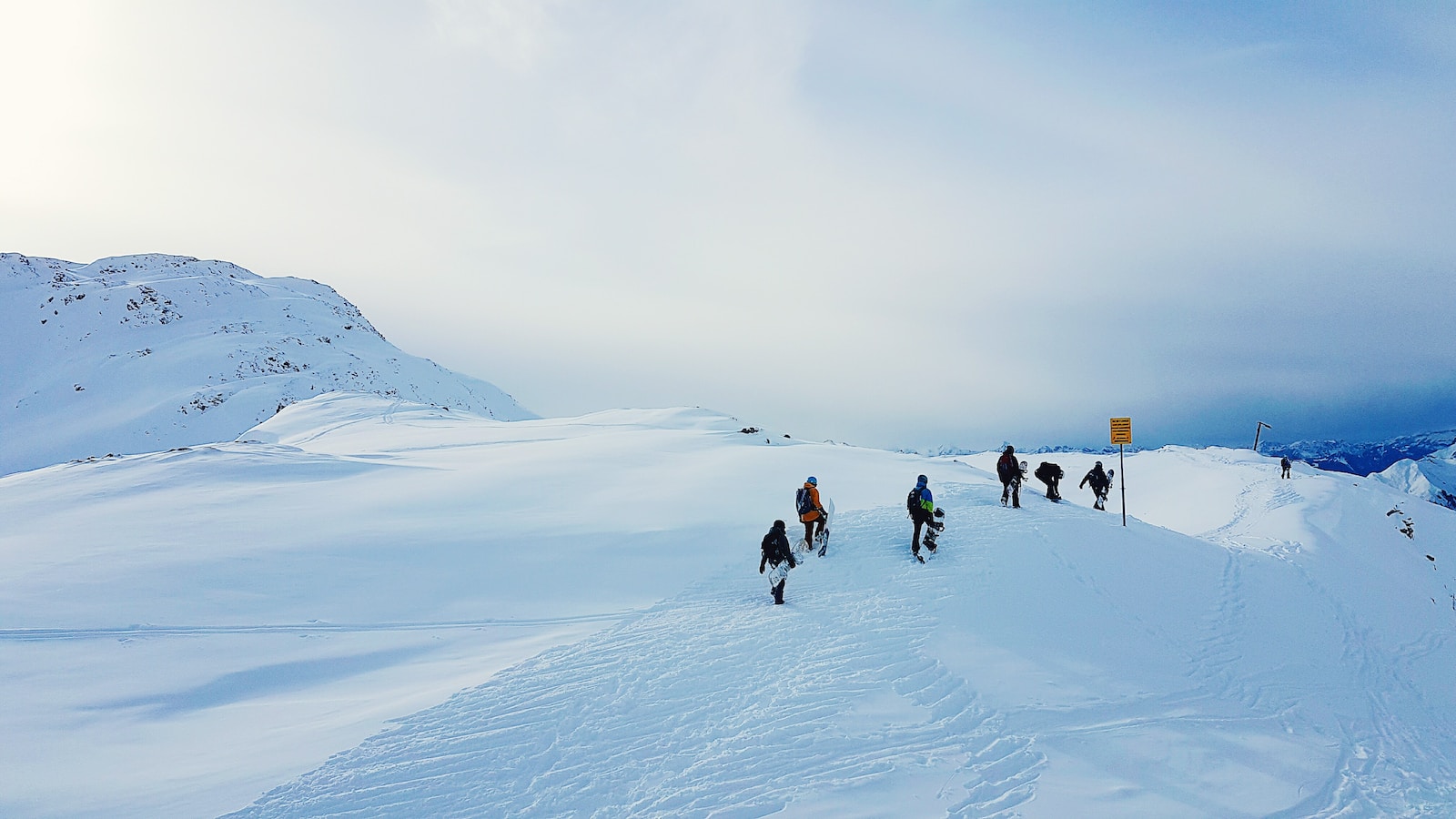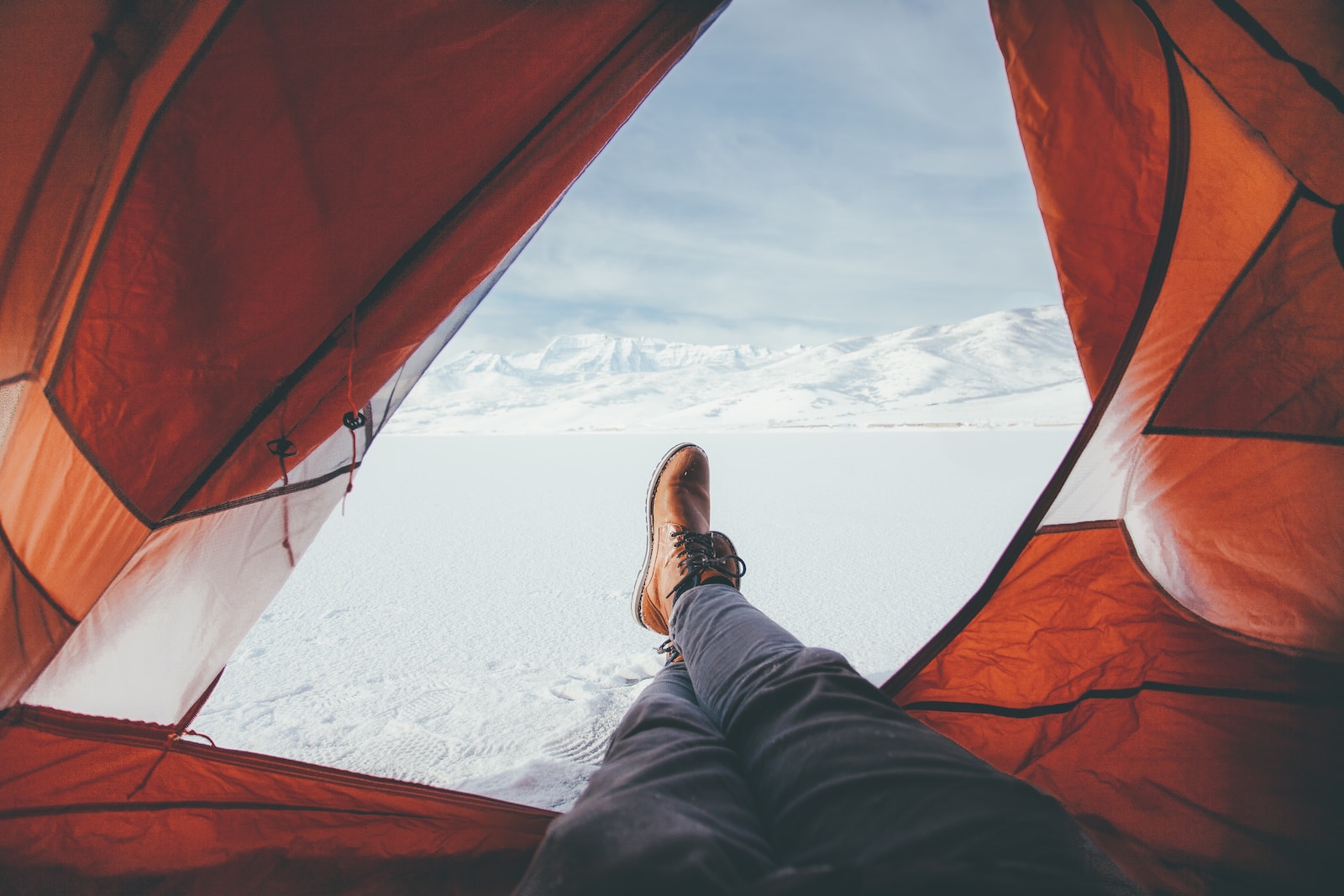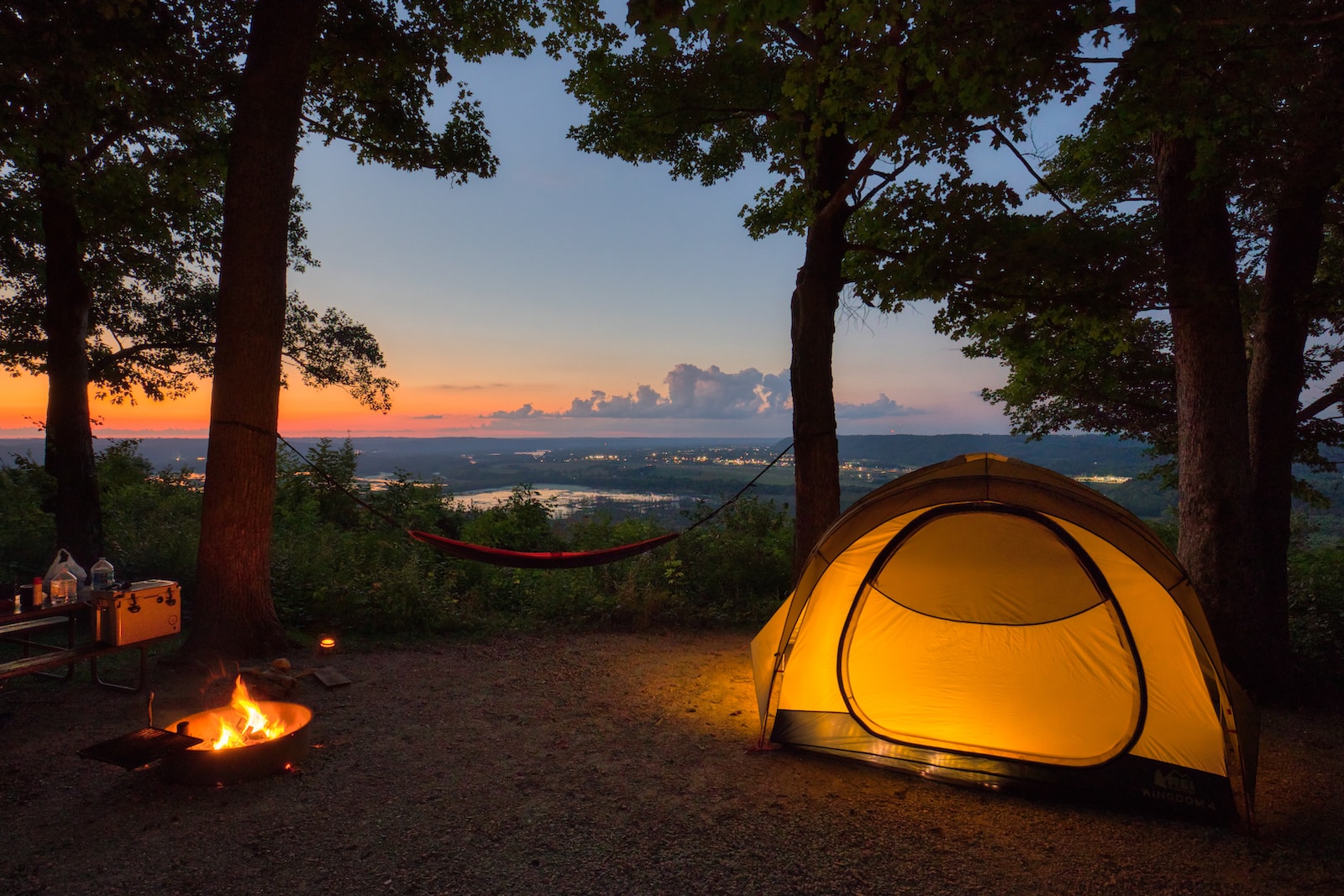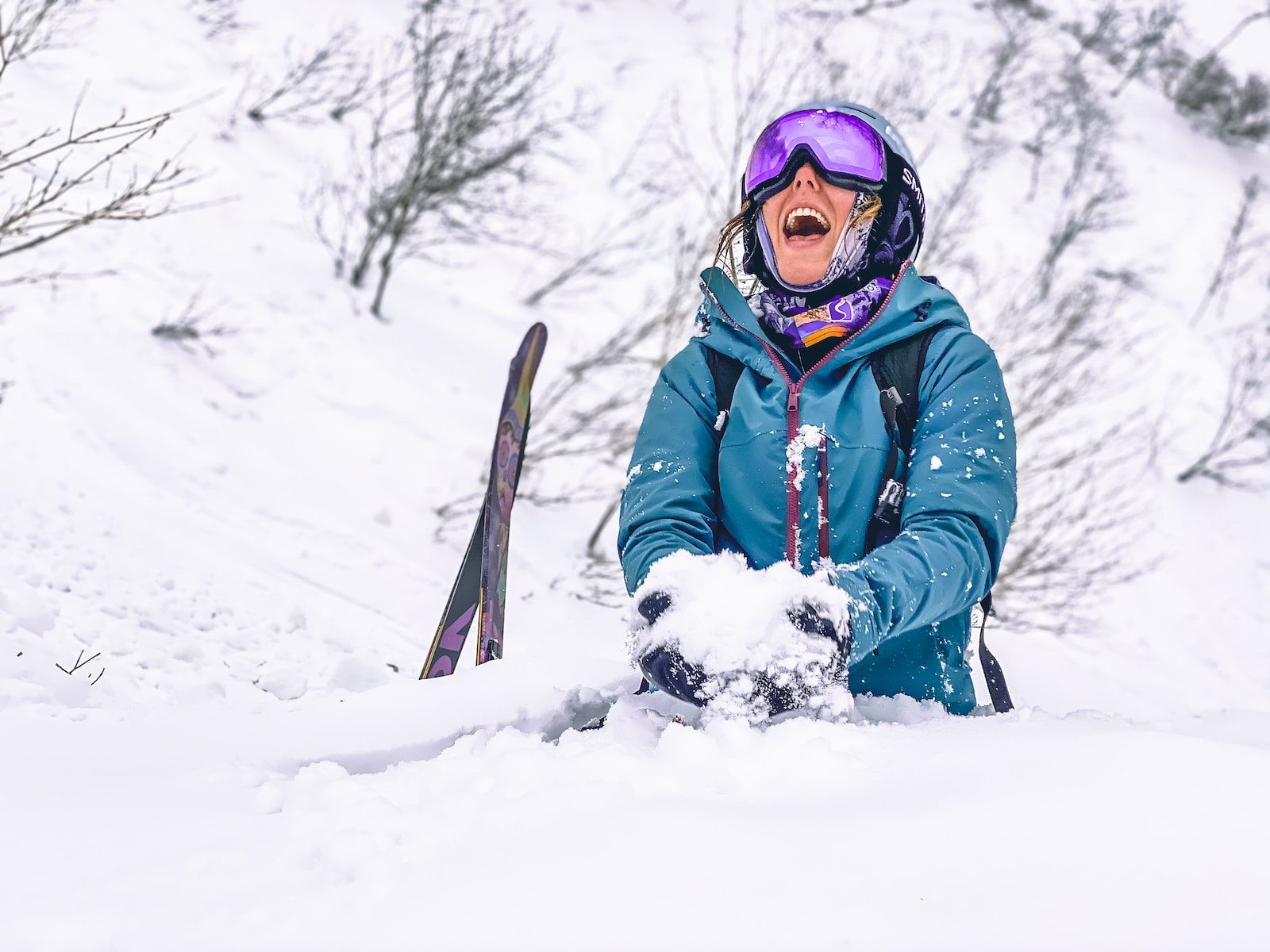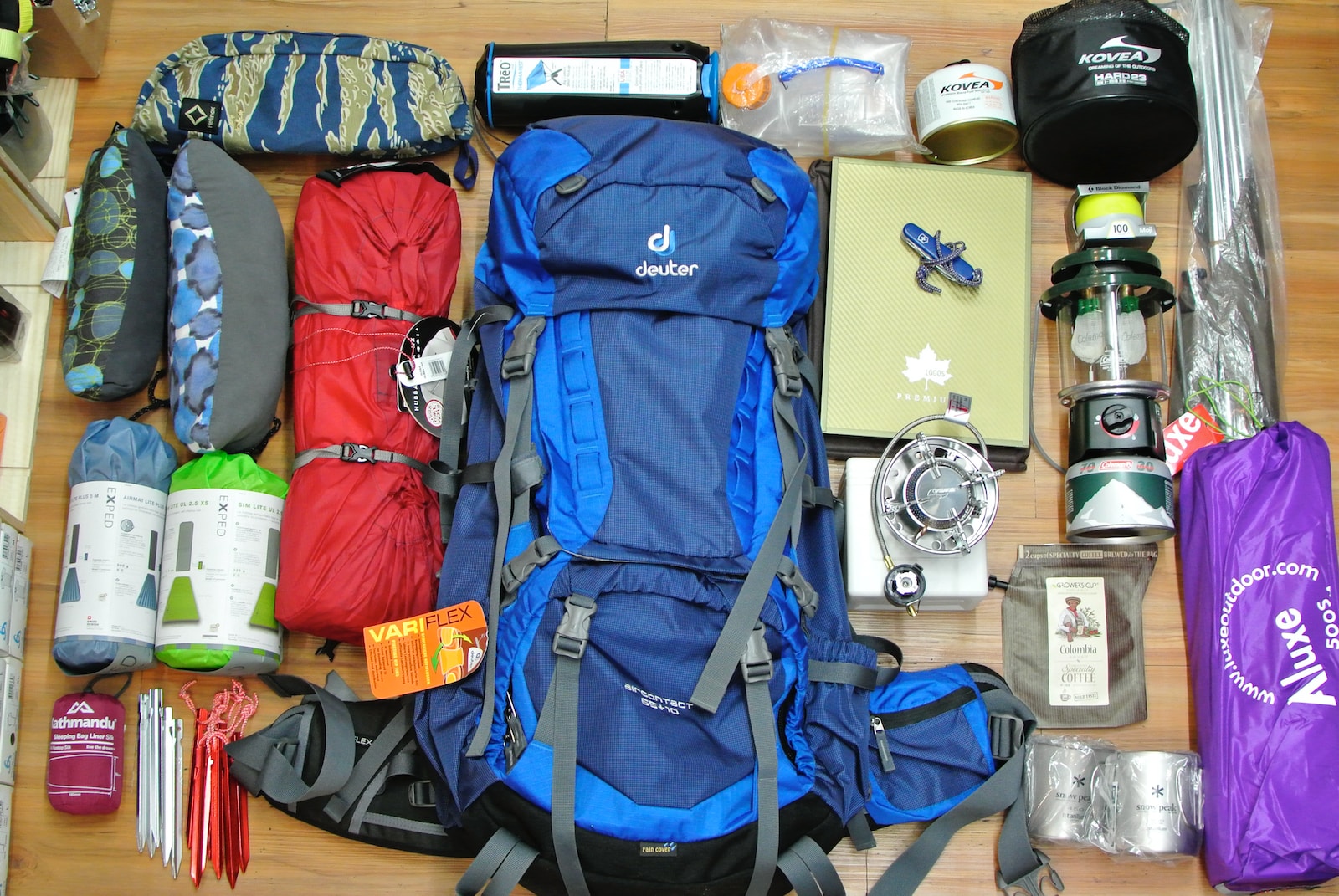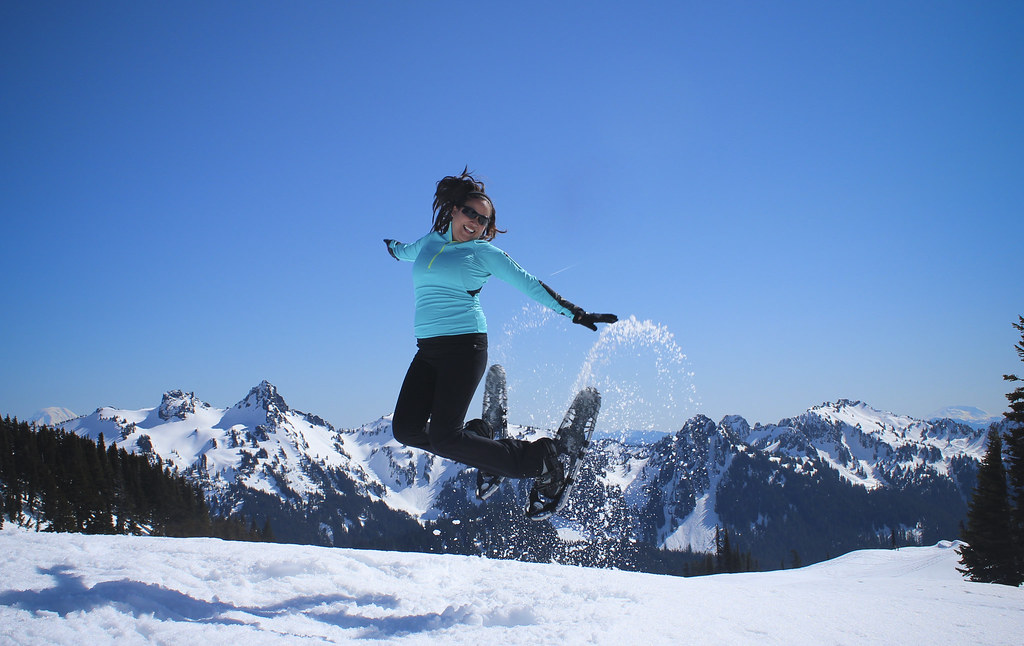Winter hiking offers a unique blend of serene, snow-covered landscapes and exciting challenges. However, it also demands proper preparation, particularly when it comes to gear. In this comprehensive guide, we’ll delve into the essential winter hiking gear that will keep you safe, warm, and ready to conquer the cold.
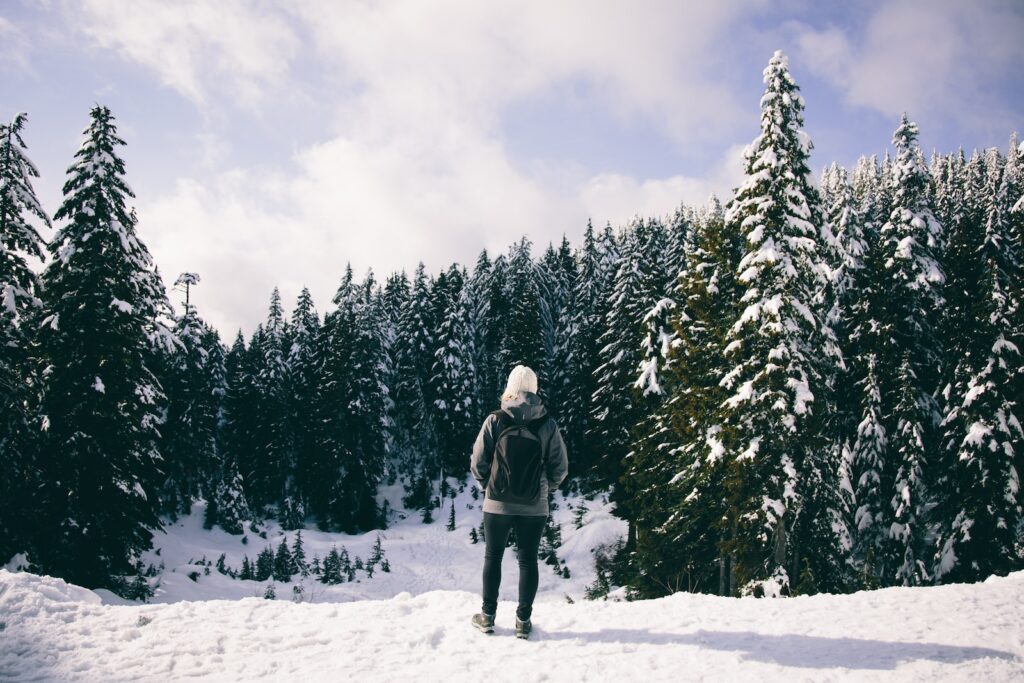
Understanding Winter Hiking Gear
When it comes to braving the cold and harsh conditions of winter hiking, not all gear is created equal. A winter hiking gear is specifically designed to withstand the severe weather conditions that winter can throw at you.
What Makes Gear ‘Winter-Ready’?
Winter-ready gear is defined by several key features. First and foremost, it is designed to provide warmth. This is achieved through insulation, which traps body heat and prevents it from escaping.
Secondly, winter gear is made with materials that are resistant to wind and water, protecting you from snow, sleet, and icy winds.
Lastly, winter-ready gear is durable and designed to withstand the rigors of winter hiking, from navigating icy trails to enduring exposure to the elements.
Key Features of Winter Hiking Gear
When shopping for winter hiking gear, there are several features to look out for:
- Insulation: Look for gear with high-quality insulation to keep you warm in cold temperatures.
- Water and Wind Resistance: Your gear should protect you from the elements, including wind, snow, and sleet.
- Durability: Winter hiking can be tough on gear, so it’s important to choose durable items that can withstand the conditions.
- Fit and Comfort: Gear that fits well and is comfortable to wear can make a big difference on long winter hikes.
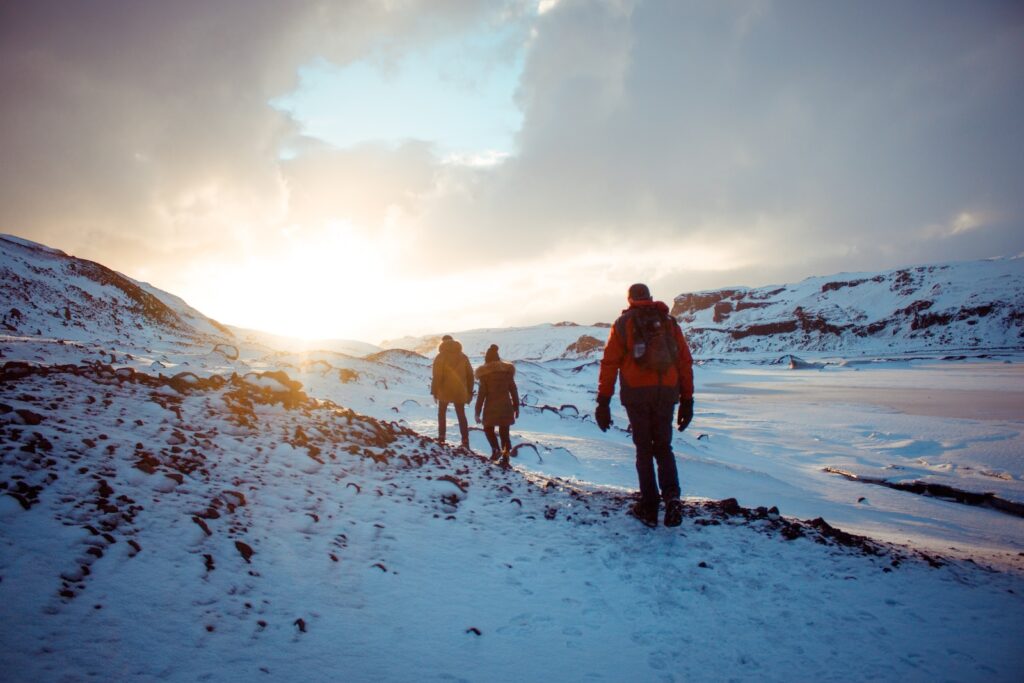
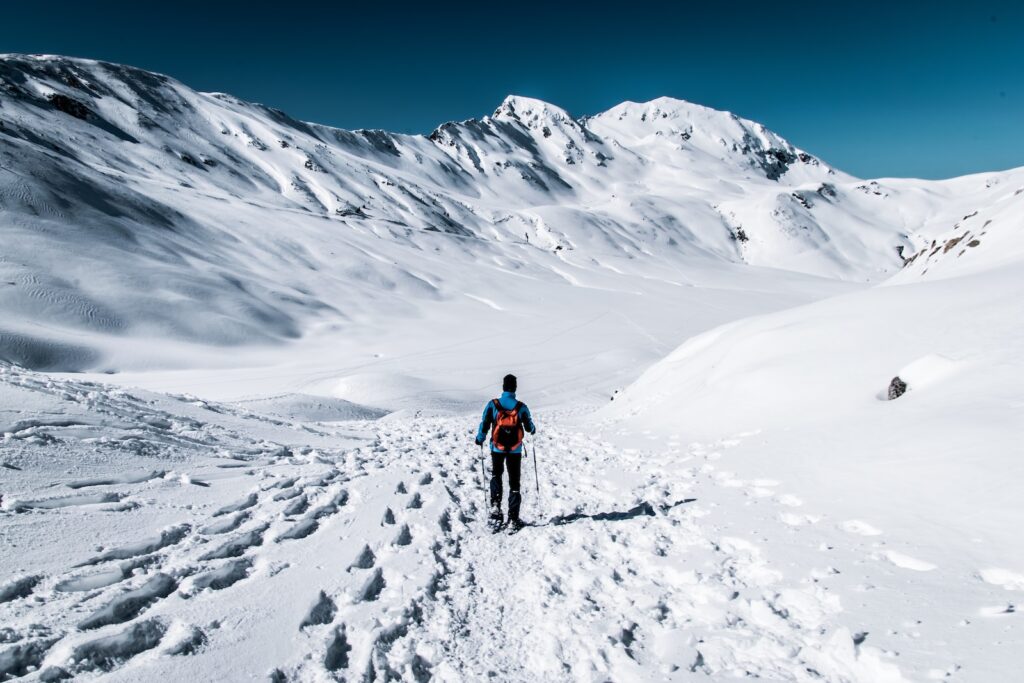
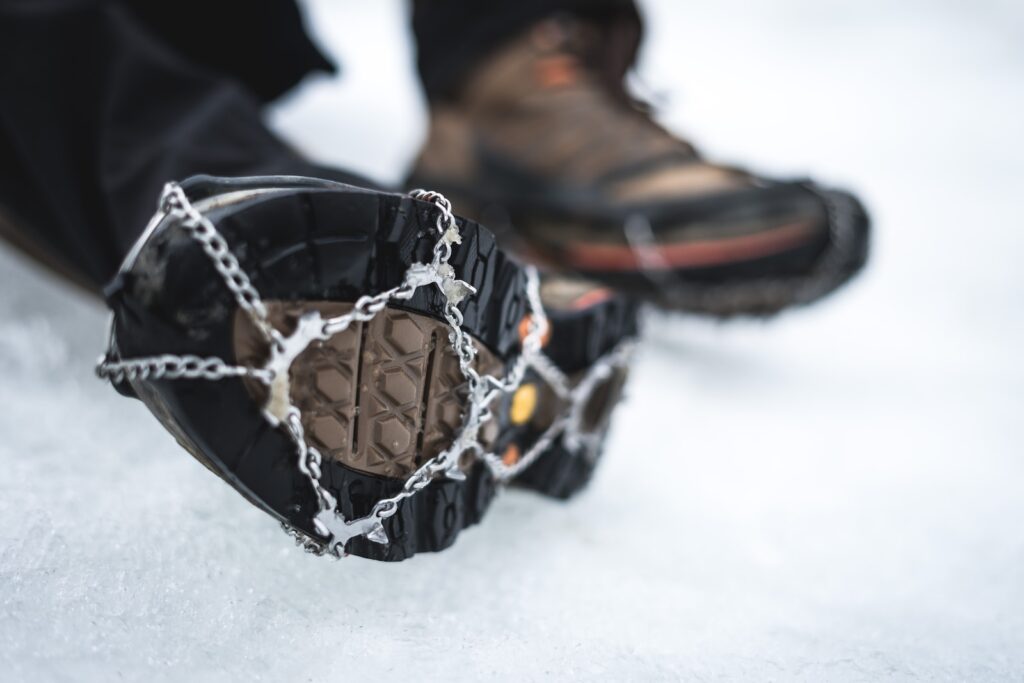
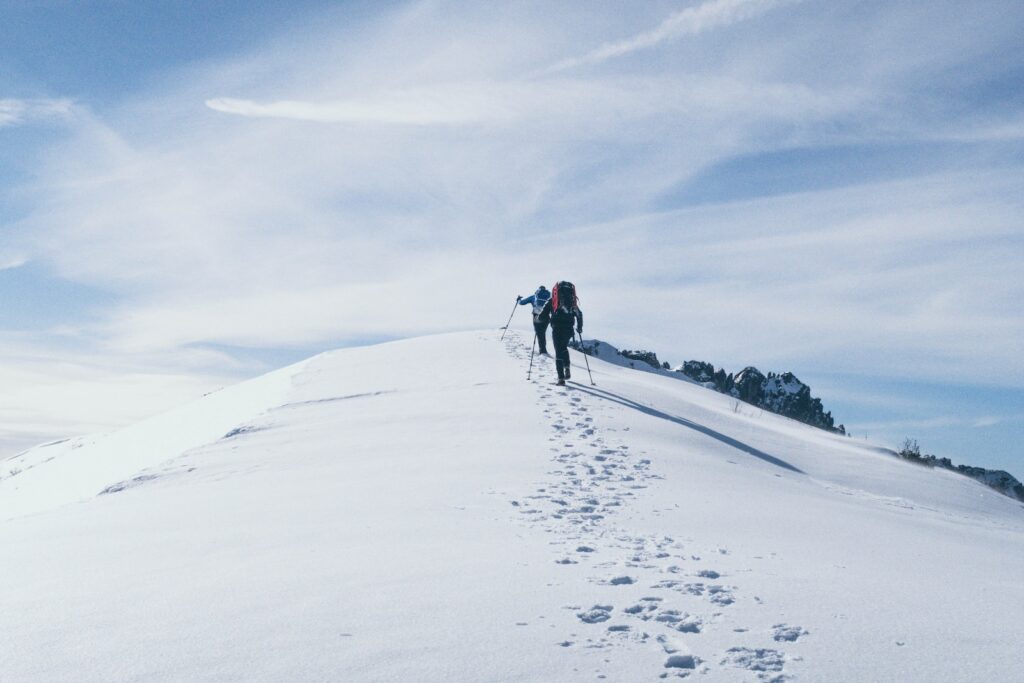
Choosing the Right Winter Hiking Gear
Selecting the right winter hiking gear can be the difference between a memorable winter adventure and a frosty disaster. Here are some factors to consider when making your choice.
Material and Insulation: What Your Gear Should Be Made Of
The material of your gear plays a crucial role in its performance. For outerwear, look for materials that are both waterproof and breathable, such as Gore-Tex. For insulation, down is very warm and lightweight, but it doesn’t perform well when wet. Synthetic insulation, on the other hand, provides warmth even when damp.
Weight: Balancing Comfort and Functionality
Winter hiking gear tends to be heavier than its summer counterparts due to the additional insulation and durable materials. However, it’s important to strike a balance between comfort, warmth, and weight. Lightweight gear can make hiking more enjoyable, but not at the expense of staying warm and dry.
Durability: Gear That Stands the Test of Time
Winter conditions can be tough on gear. Look for items that are made to last, with strong materials and good construction. Durable gear may be more expensive upfront, but it can save money in the long run as it won’t need to be replaced as often.
Price: Getting the Best Value for Your Money
Winter hiking gear can range significantly in price, from budget options to high-end models. While it can be tempting to go for the cheapest option, remember that a good quality gear is an investment. It’s worth spending a bit more for gear that will keep you warm, dry, and safe, and last for many hiking trips to come.
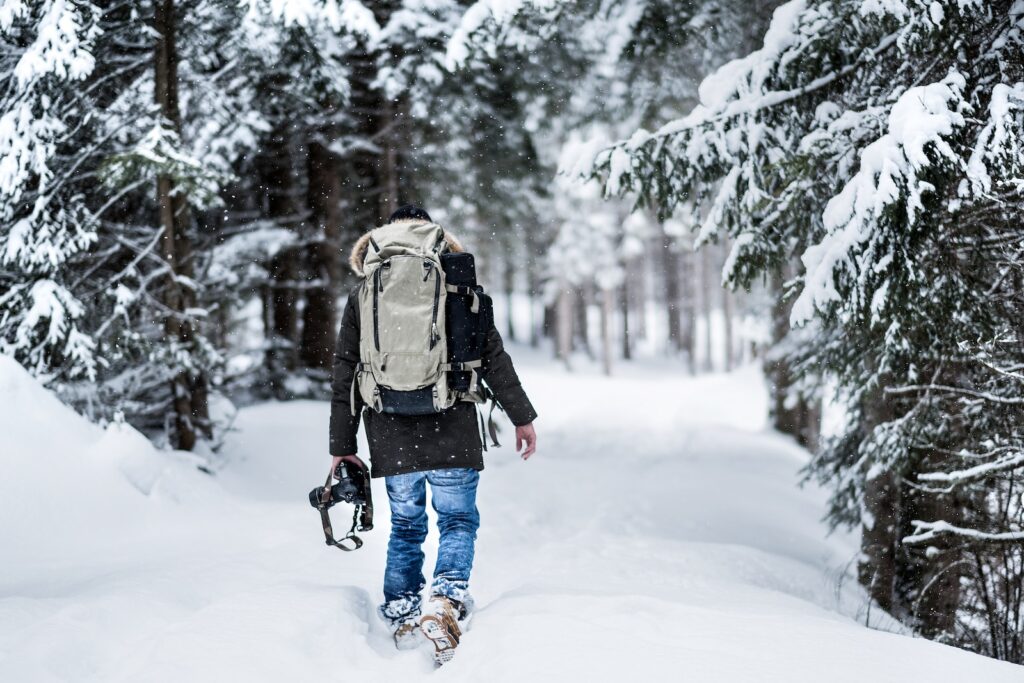
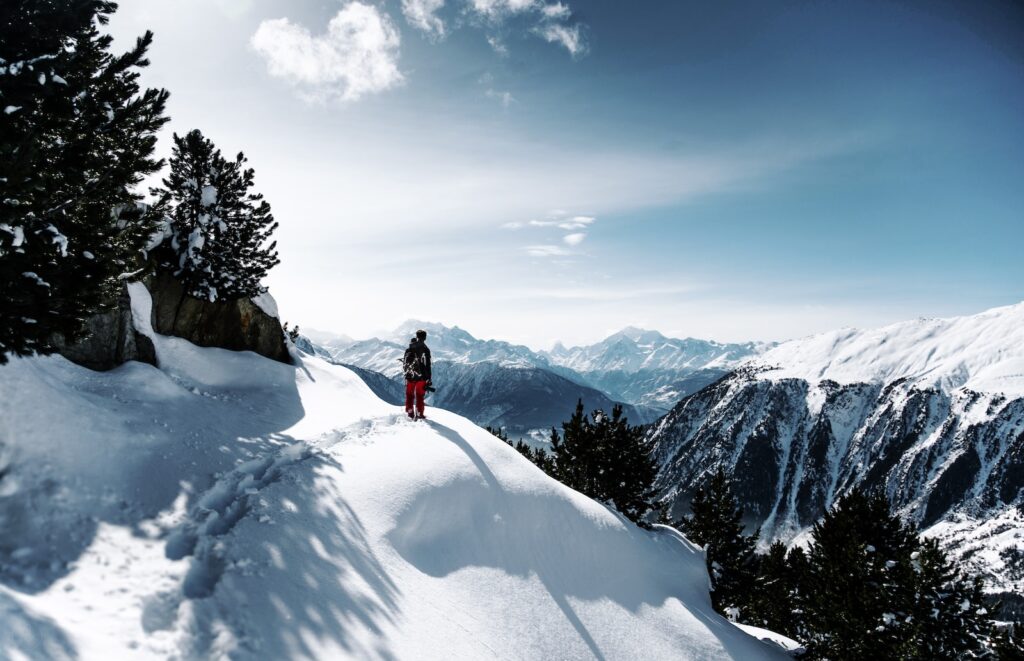
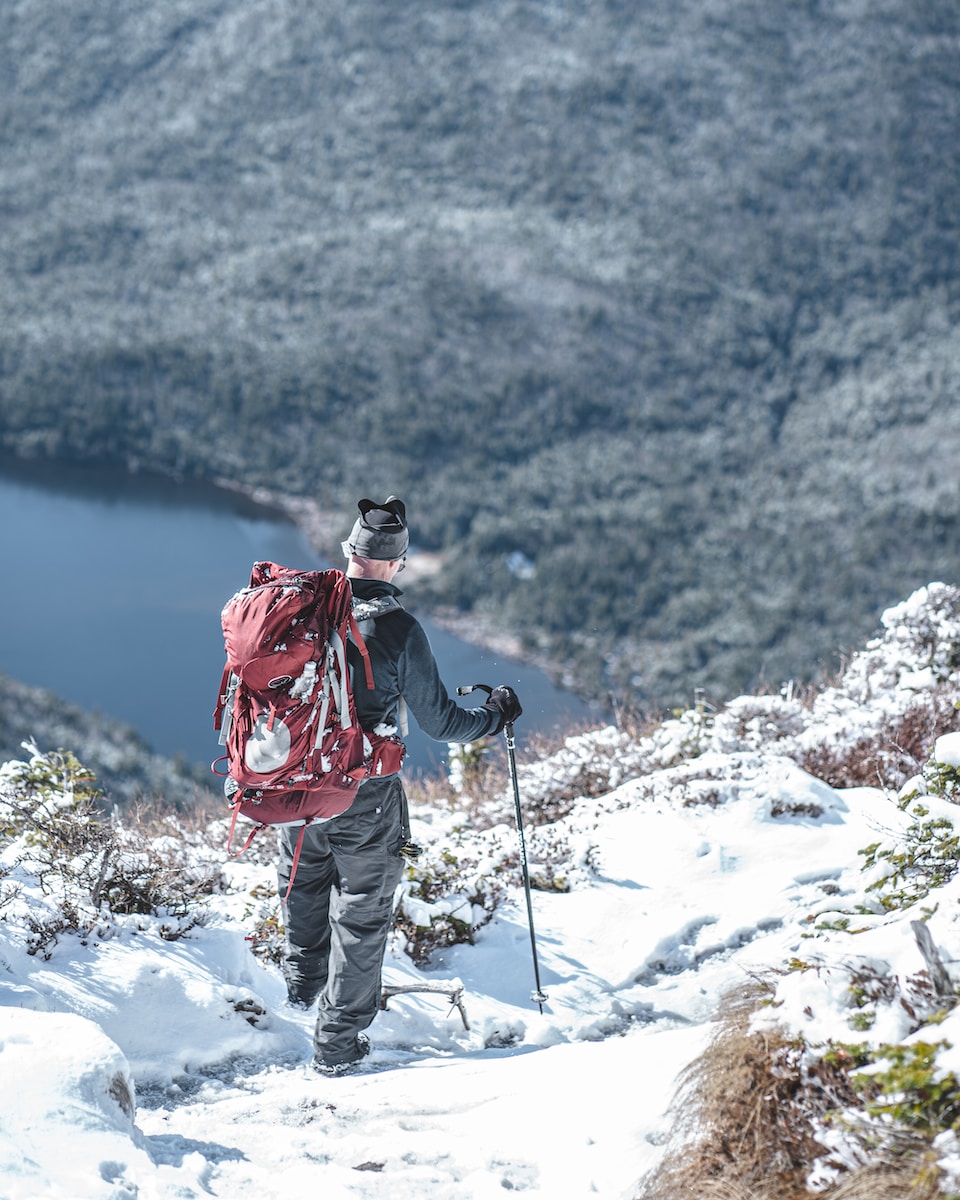
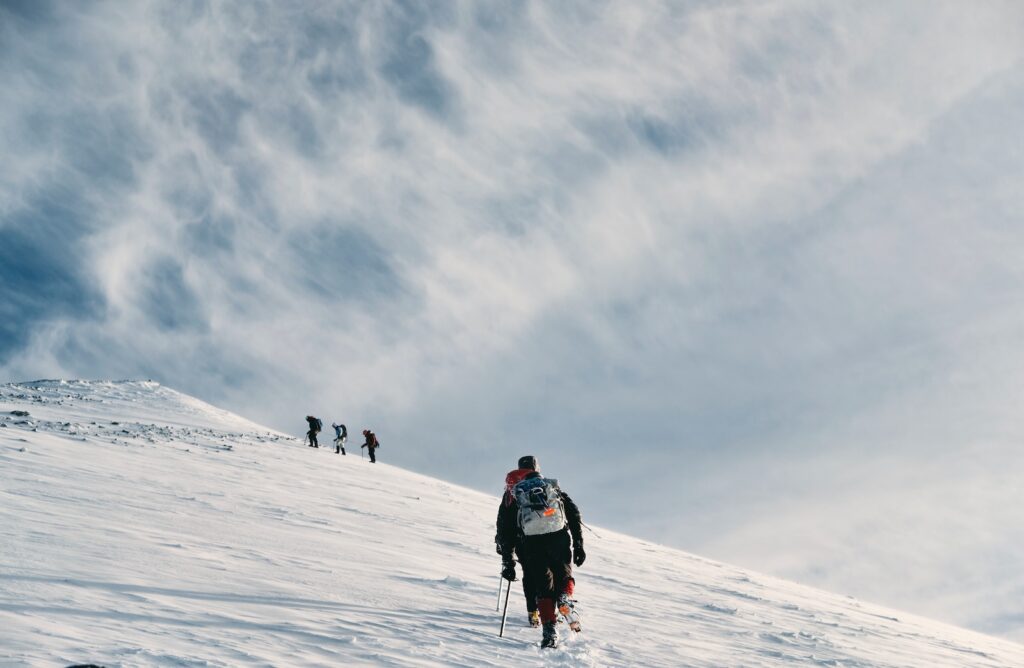
Must-Have Winter Hiking Gear
Proper gear is the key to a successful and enjoyable winter hike. Here are some essential items that should be on every winter hiker’s list.
Footwear: Boots and Gaiters for Winter Hiking
Good footwear is crucial for winter hiking. Look for insulated, waterproof boots that provide good ankle support. A sturdy sole with good traction is also important for navigating slippery or icy trails.
Gaiters are another key piece of winter hiking gear. They cover the tops of your boots and lower legs, keeping snow, water, and debris out of your boots.
Clothing: Layering for the Cold
Dressing in layers is the best way to stay warm and dry during a winter hike. Start with a moisture-wicking base layer to keep sweat away from your skin. Add an insulating middle layer to retain body heat, and finish with a waterproof and windproof outer layer to protect against the elements.
Don’t forget about your extremities. Insulated gloves or mittens, a warm hat, and thermal socks are all must-haves.
Accessories: Gloves, Hats, and More
Accessories can make a big difference in your comfort and safety on a winter hike. In addition to gloves and a hat, consider a neck gaiter or face mask for extra warmth. Sunglasses or goggles can protect your eyes from the sun and wind, and trekking poles can provide stability on icy trails.
Safety Gear: Navigational Tools, First Aid, and Emergency Shelters
Safety should always be a priority when hiking, especially in winter. Always carry a map and compass or GPS for navigation. A first aid kit and knowledge of basic first aid are also essential.
For longer hikes or in case of emergency, consider carrying a lightweight emergency shelter or bivy sack. And don’t forget a headlamp or flashlight with extra batteries, as winter days are short and you don’t want to be caught out after dark.
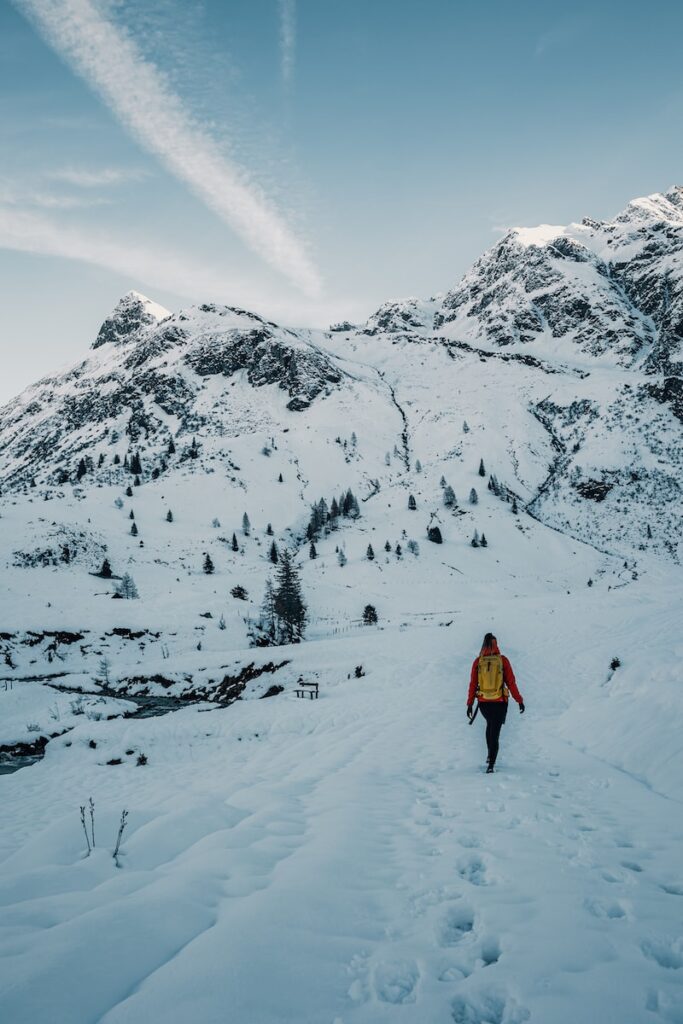
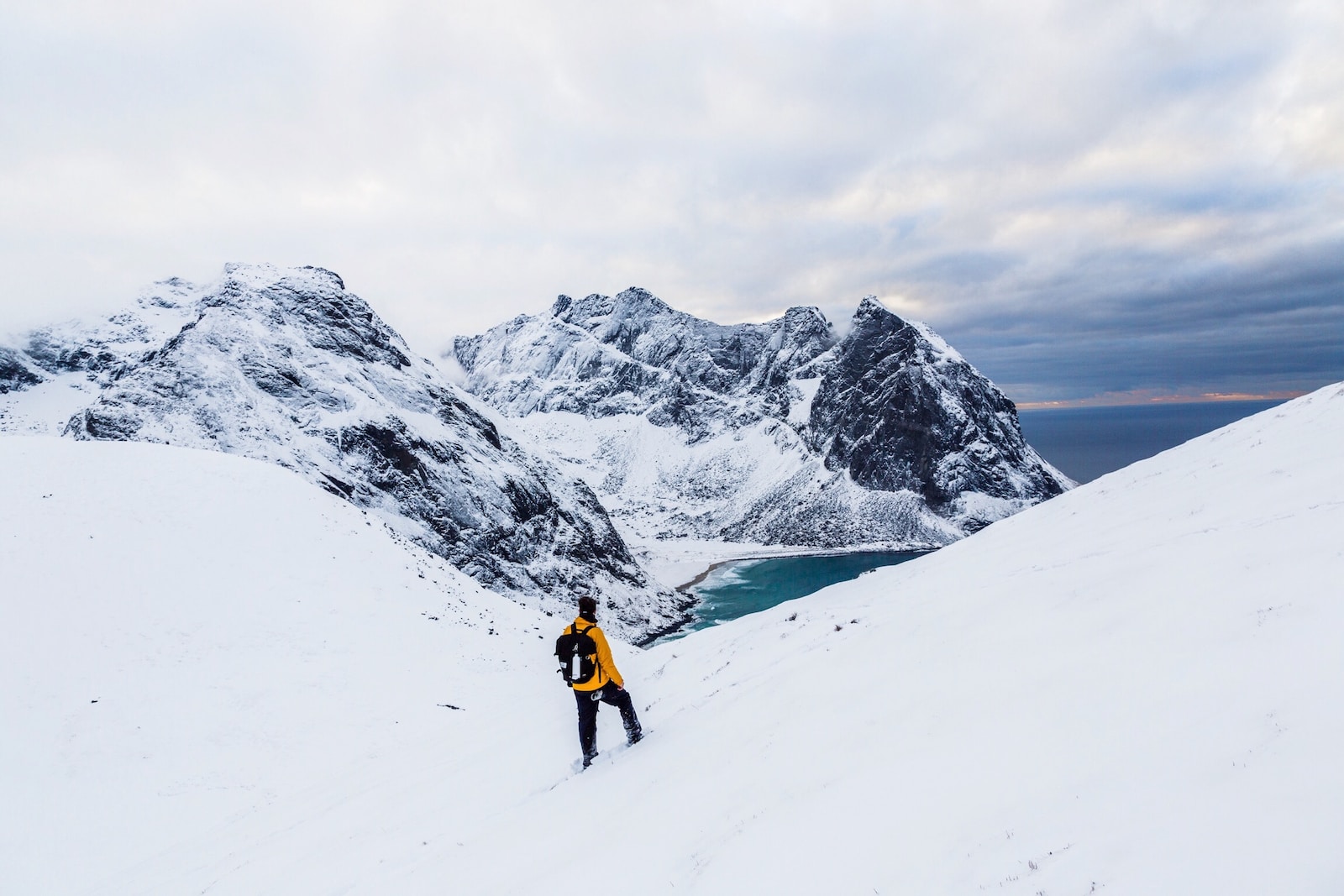
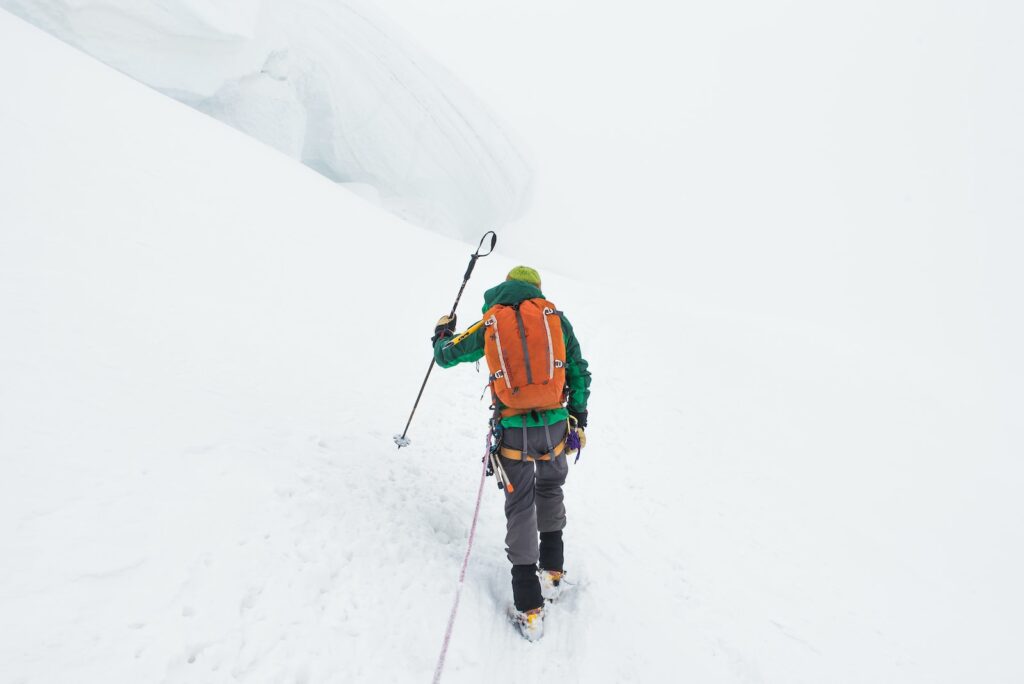
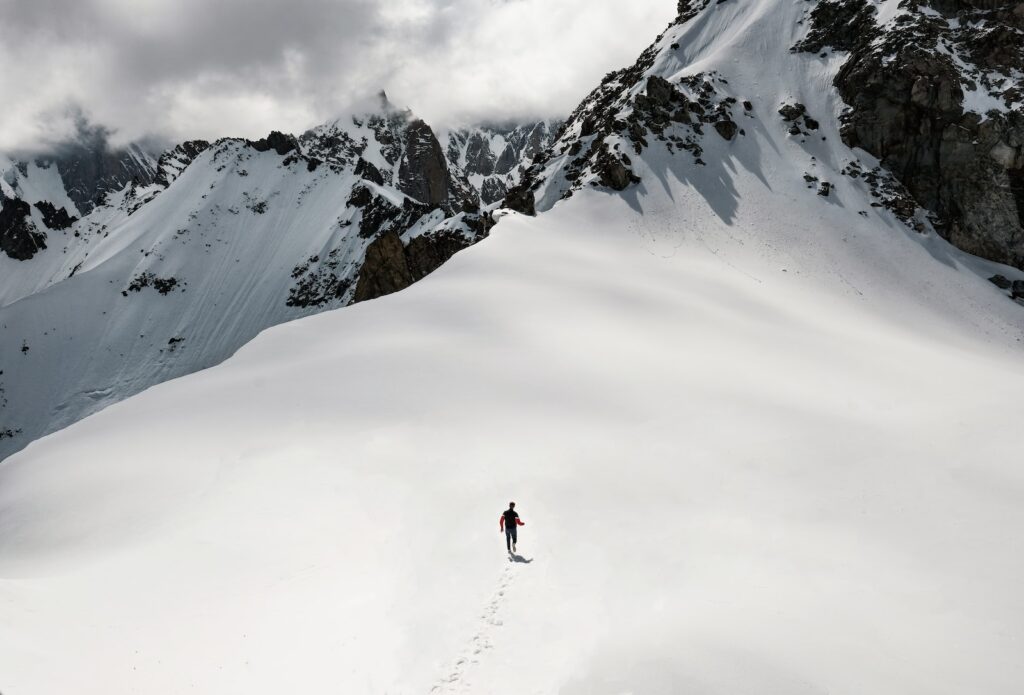
Caring for Your Winter Hiking Gear
Investing in winter hiking gear is just the first step. Proper care and maintenance can significantly extend the lifespan of your gear and ensure it continues to perform well in harsh winter conditions.
Cleaning Your Winter Hiking Gear: Do’s and Don’ts
After each hike, it’s a good idea to clean your gear. Dirt and sweat can degrade materials over time, reducing their performance. Most clothing items can be washed in a machine on a gentle cycle with a mild detergent. However, certain items, like down jackets and waterproof clothing, may require special care. Always check the manufacturer’s instructions.
Boots should be cleaned with a soft brush to remove dirt. If they’re very dirty, you can use a mild soap and water, but avoid soaking them. Always let boots air dry away from direct heat, which can damage the materials.
Storing Your Gear: Keeping It Ready for the Next Adventure
Proper storage can also extend the life of your gear. Make sure everything is completely dry before storing to prevent mold and mildew. Store clothing in a cool, dry place out of direct sunlight, which can fade colors and degrade materials. Boots should be stored in a well-ventilated area to prevent them from becoming musty.
Repairing Your Gear: A Handy Guide
Despite your best efforts, your gear may get damaged. Many minor issues, like small tears or broken buckles, can be repaired at home with a basic repair kit. For more serious damage, you may need to send the item to a professional repair service or contact the manufacturer. Regular inspections can help you spot and fix minor issues before they become major problems.
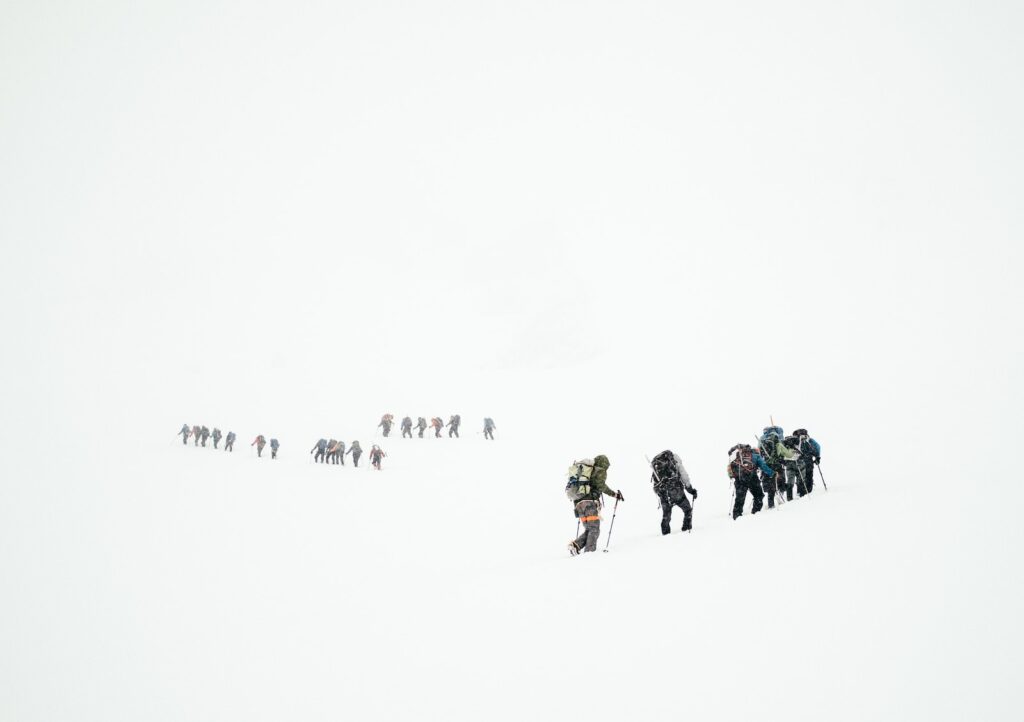
Winter Hiking Gear Checklist
- Insulated, Waterproof Boots: These boots are designed to keep your feet warm and dry in snowy and icy conditions. They have a waterproof outer layer and an insulated inner layer. The soles are typically made of rubber and have deep treads for better traction on slippery surfaces.
- Thermal Socks: Made from materials like wool or synthetic fibers, these socks provide excellent insulation to keep your feet warm. They also wick away moisture to keep your feet dry.
- Layered Clothing: Layering allows you to adjust your clothing to changing conditions. The base layer wicks sweat away from your body, the middle layer provides insulation, and the outer layer protects you from wind and precipitation.
- Gloves or Mittens: Insulated gloves or mittens are essential for protecting your hands from the cold. Some models are also waterproof.
- Warm Hat: A hat that covers your ears is crucial for preventing heat loss from your head.
- Neck Gaiter or Scarf: This can protect your neck from the cold and can also be pulled up to cover your face in windy conditions.
- Gaiters: These coverings for your lower legs prevent snow from getting into your boots.
- Sunglasses or Goggles: Sunglasses protect your eyes from UV rays, while goggles can also protect your eyes from wind and snow.
- Sunscreen: Even in winter, UV rays can cause sunburn, especially because they reflect off the snow.
- Backpack: A good backpack should be comfortable to wear, distribute weight evenly, and have enough capacity to hold all your gear.
- Hydration Pack or Water Bottles: Staying hydrated is important in cold weather, even if you don’t feel thirsty. A hydration pack or water bottles can help you keep up your water intake.
- High-Energy Snacks: Foods like trail mix, energy bars, and jerky provide a quick source of energy on the trail.
- Insulated Container for Hot Drinks or Soup: A thermos can keep a hot drink or soup warm for hours, providing a morale boost on a cold day.
- Map and Compass or GPS: These navigation tools can help you stay on track. A map and compass are reliable and don’t require batteries, while a GPS is easy to use and can provide more detailed information.
- Headlamp or Flashlight: These can help you see in the dark, whether you’re hiking early in the morning, late in the evening, or in case of an emergency.
- First Aid Kit: A basic first aid kit should include bandages, antiseptic wipes, tweezers, medical tape, pain relievers, and any personal medication.
- Multi-tool or Knife: These tools can be used for a variety of tasks, from preparing food to making gear repairs.
- Winter Camping Tent: This is a necessity if you are planning to camp during the winter. You need a well insulated winter camping tent with strong poles which can withstand stronger winds and snowfall.
- Fire Starter: Waterproof matches or a lighter can be used to start a fire for warmth, cooking, or signaling for help.
- Heat Packs: These small packets produce heat when activated and can be placed inside your gloves or boots for extra warmth.
- Trekking Poles: Trekking poles provide stability and balance on uneven or slippery terrain.
- Crampons or Microspikes: These devices attach to your boots and provide extra traction on icy or hard-packed snow.
- Snowshoes: Snowshoes distribute your weight over a larger area to prevent you from sinking into deep snow.
- Avalanche Transceiver, Probe, and Shovel: If you’re hiking in avalanche terrain, these tools are essential for avalanche safety. The transceiver sends out a signal that can be detected by rescuers, the probe is used to locate buried victims, and the shovel is used to dig them out.
- Personal Locator Beacon or Satellite Messenger: These devices can send out a distress signal with your location in case of an emergency.
- Toilet Paper and Sanitation Trowel: These are used for digging a hole to bury human waste. Always follow Leave No Trace principles and bury waste at least 200 feet from water, campsites, and trails.
- Trash Bag: Carry a trash bag to pack out all trash, including food scraps and toilet paper. Leave No Trace principles dictate that you should leave your campsite as clean as or cleaner than you found it.
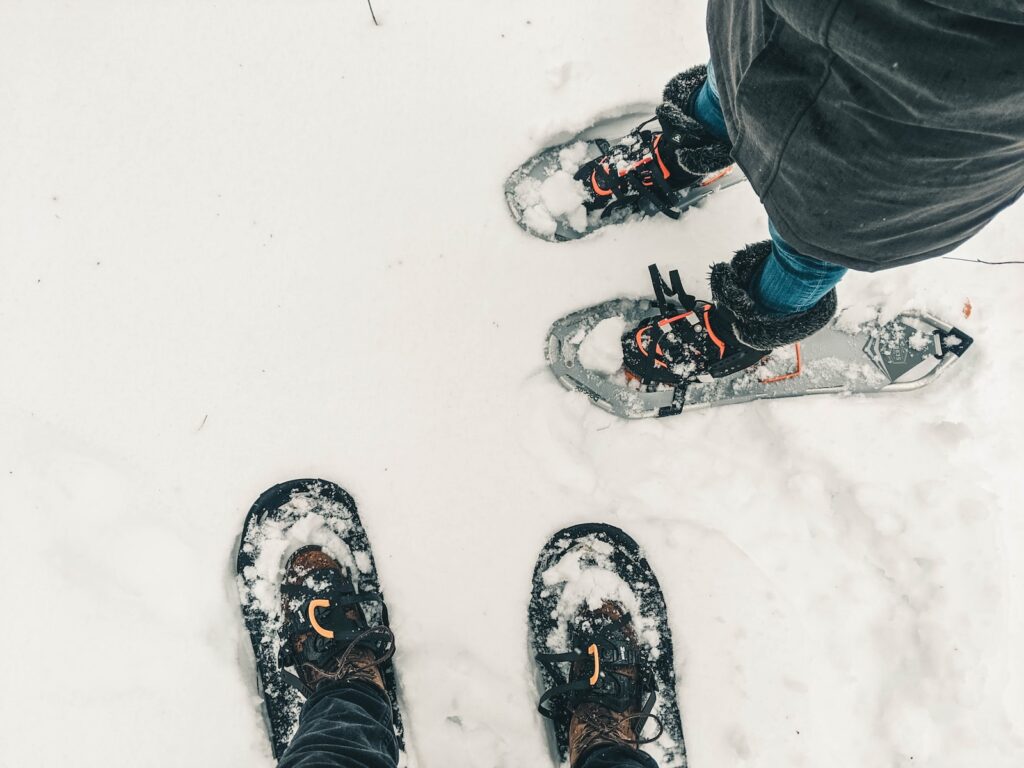
Conclusion
Remember, the right gear for you depends on your specific needs and circumstances. Consider factors like material, weight, durability, and price. Explore the different options available in the market, from budget-friendly choices to high-end models. And once you’ve made your investment, ensure you care for your gear properly to extend its lifespan.
Winter hiking can be a test of your resilience and adaptability, but with the right gear, it can also be an unforgettable adventure. So pack your winter hiking gear and embrace the beauty of the great outdoors in winter. Happy hiking!
Frequently Asked Questions About Winter Hiking Gear
In this section, we’ll address some of the most common questions that hikers have about winter hiking gear.
- Can I use my regular hiking gear for winter hikes?
While some gear, like backpacks or trekking poles, can be used year-round, other items, like clothing and footwear, need to be suitable for winter conditions. Winter hiking gear is designed to provide extra warmth and protection from the elements.
- How do I keep my feet warm while winter hiking?
Start with a pair of thermal socks. Look for materials like merino wool that provide good insulation even when wet. Insulated, waterproof boots are also a must. You can also add heat packs to your boots for extra warmth.
- How should I dress for a winter hike?
Dressing in layers is key. Start with a moisture-wicking base layer, add an insulating middle layer, and finish with a waterproof and windproof outer layer. Don’t forget about your extremities – wear a warm hat, gloves, and thermal socks.
- What should I do if my gear gets wet during a hike?
If possible, dry it out as soon as you can. Moisture can reduce the insulating properties of your gear and make you feel colder. If you’re on a multi-day hike, try to dry out your gear overnight.

